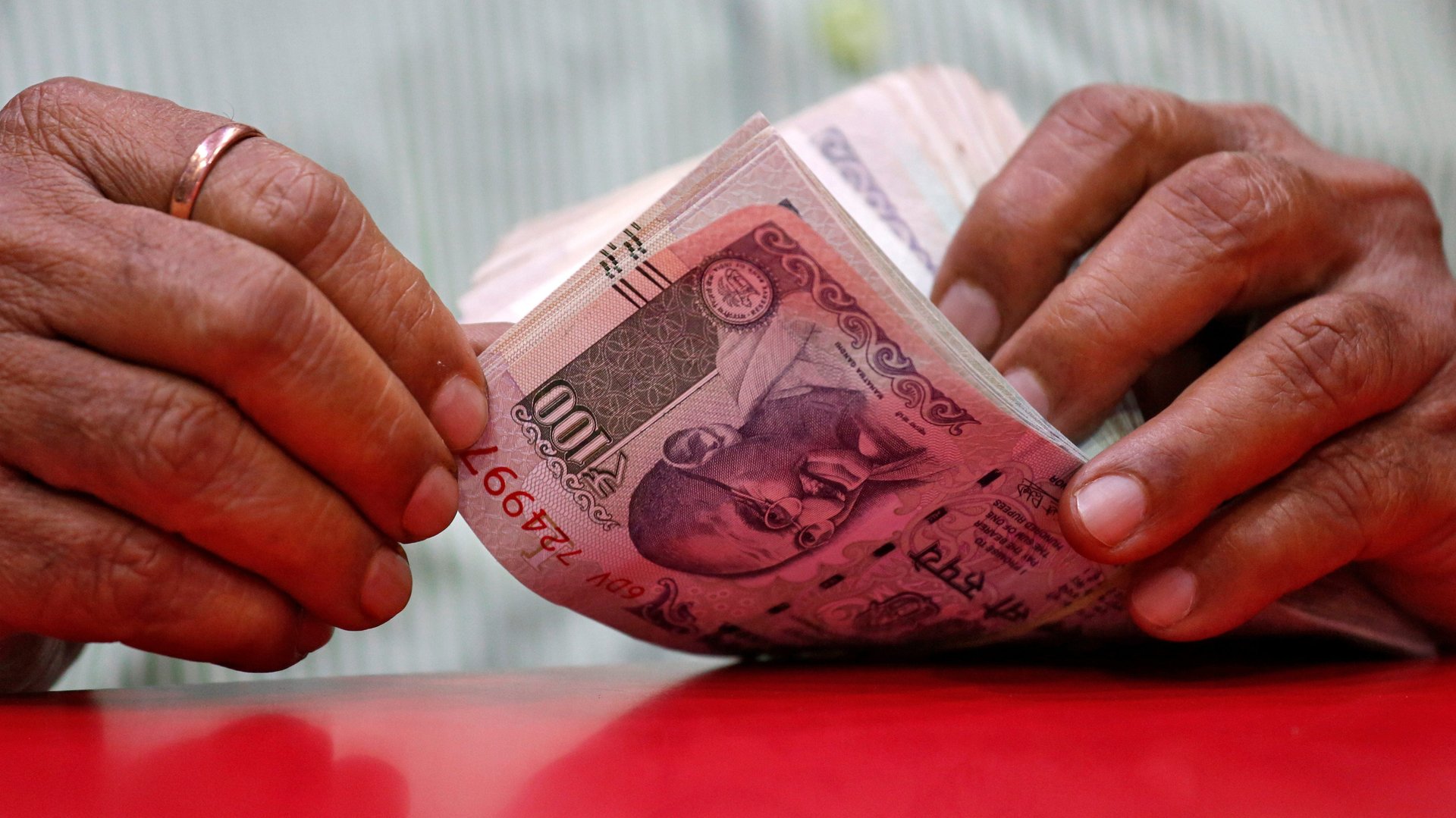India’s GDP growth slumps to a shocking 4.5% in September quarter
There seems to be no end to the bad news for India’s slowing economy.


There seems to be no end to the bad news for India’s slowing economy.
The country’s GDP grew at a modest 4.5% in the September quarter, official data released today (Nov. 29) showed. This marks the sixth straight fall in quarterly GDP growth and also the first time in almost seven years that it has fallen below the psychologically important 5% mark.
The fall in second quarter GDP growth was on expected lines.
Fitch group firm India Ratings and Research had, on Nov. 26, forecast growth to slow down to 4.7%. Ratings agency ICRA concurred. Singapore’s DBS Bank had pegged it at an even lower 4.3%.
No respite
The gloomy figures are only the latest in a series of bad news around the Indian economy.
Consumer spending, which forms the bedrock of the Indian economy, has taken a beating. It declined for the first time in four decades in 2017-18, according to recent data. Consumers are still penny-pinching and deferring purchases on not only big-ticket items like cars, but even Rs5 ($0.07) biscuit packs, owing to eroding wages and record-high unemployment levels.
Factory output shrank by 4.3% in September—the weakest performance in seven years—due to contraction in core sectors like manufacturing, mining and electricity. An export slump has also aggravated the situation.
Crisis management
For most of the year, India’s central bank was at the forefront of fighting the slump. The Reserve Bank of India (RBI), through its past five bi-monthly policy meetings, has cut key interest rates by a cumulative 135 basis points this year.
However, it is feared that the RBI’s rate cut cycle may bottom out soon.
Low interest rates also stoke inflation. Consumer price index-based retail inflation touched a 16-month high of 4.62% in October, following an extended monsoon that damaged crops in many parts of India. This drove up the prices of onions and tomatoes. The central bank’s target is to keep retail inflation under 4%.
This may shift the onus on stimulus completely to the Narendra Modi government. In recent months it has announced a spate of measures including cuts in corporate taxes, merger of stressed banks, and the creation of a special fund for troubled real estate assets.
These measures, though, are yet to bear fruit.